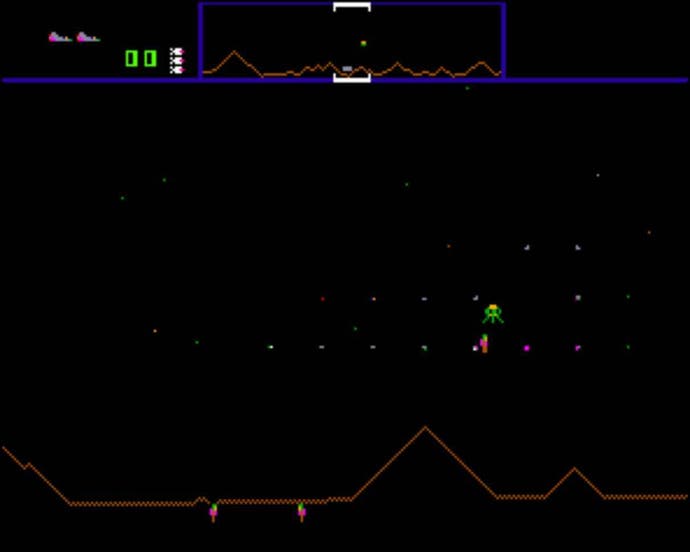Defender
Defender of the people.
Not all classic games rocked the world as soon as they were released. Defender took a long time to establish itself as a true landmark, but a steady rise to fame can often result in a much longer lasting appreciation.
When Eugene Jarvis' first arcade game was tested on a public audience, it was a disaster. Not only did the development team fry the ROM chip as it was about to go out on the floor at an electronics show, but when it finally did flicker into life, the crowds shied away from the apparently complex five button control system. Games were meant to be fast, simple and, well, vertical. Defender was none of these things.
The game speed was rapid, to be sure, but the attention span required from the player was far more demanding than most other one-dimensional titles of the day. Defender demanded complex dexterity, strategic, controlled gameplay and no less than 100% of the player's concentration. Originally a simple and overly easy game, the difficulty levels had been ramped right up while the cabinet was still in prototyping, and at each turn the development team saw fit to add another and another assailant to keep the gameplay white hot.

Legend has it that Jarvis was unhappy with the simple premise of a rolling, horizontal landscape shoot-'em-up, and pushed himself for some kind of additional skill requirement and engrossing back story. Eventually, the concept of humanoids being kidnapped by aliens (who then mutated them) came to him in a dream, and he set to work creating a role for gamers to become the rescuer of these unhomed, roaming alien fodder.
Now regarded as perhaps the most difficult classic game of all time, Defender is more respected than enjoyed: a thing of worship and a harsh test in the education of the arcade stalwart.
